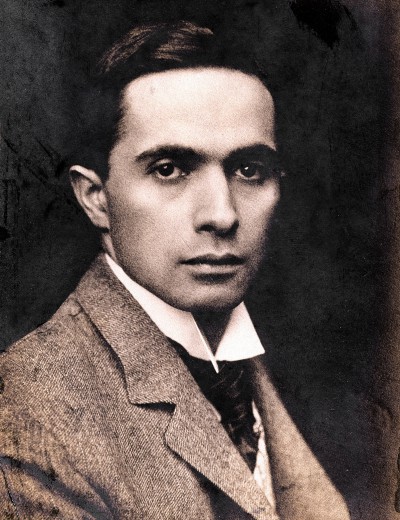
Joseph Leyendecker
About
Joseph Leyendecker was born to Peter and Elizabeth Ortsifen Leyendecker in 1874, in Montabaur, Germany. The family included Adolph aged 12, August aged 10, Joseph aged 8 and Franz (Frank) aged 4. (Frank Xavier Leyendecker also grew up to be a great illustrator.
In July 1882, the whole family emigrated to New York, USA, and eventually settled in Chicago, sponsored by Elizabeth's brother who worked for a brewery there. Frank and Joseph both displayed artistic talent. Frank joined Carl Brandt as an apprentice to learn how to do stained glass work. Joseph went to study at the Julian Academy and became a pupil of Benjamin Constant and Jean-Paul Laurens.
In 1896 the family decided that Joseph was the artistic genius and scraped together enough money to send him to Paris to study art. Frank, his younger brother went along although it was hard to tell which brother did the paintings. They both attended the Academy Julien and were considered to be talented. They returned to America in 1898 and opened a studio in Chicago.
In 1898, Joseph won a Century Magazine cover competition that brought his work to national notice. This led to cover assignments like Inland Printer, for whom he did all 12 of their covers for 1897. This work was produced in Paris, so Joe and his brother Frank went to Paris in the autumn of 1896. While he was there he spent some time studying at the Academie Julian. He also showed his work at the 1897 Salon Camp de Mars, his first major exhibition of paintings.
In the fall of 1898, the brothers returned to America and opened a studio in Chicago. Joseph was soon working for national publications like Colliers and the Saturday Evening Post. In 1900 they opened a studio in New York. From there, he poured forth an amazing quantity of illustrations, covers and advertisements.
Thereafter, for several years, he illustrated covers for the Saturday Evening Post, Collier's Weekly and other magazines. After achieving fame through his Chesterfield cigarette advertisements, he was hired in 1905 by the Arrow collar and shirt company in Troy, New York, to illustrate their publicity material.
His work was so true-to-life that women were convinced that his characters (clean-cut upstanding young Americans) were portraits of real people. The advertisements he illustrated, provoked the kind of fan mail a pop star might receive today. Although Arrow were specialists in men's shirts, Leyandecker's drawings helped the shape of women's blouses to evolve, based on the women shown in his sketches.
For nearly 40 years, he contributed regular illustrations to the Saturday Evening Post up to 1943, when the editorship changed and the new editor felt Leyandecker was too much associated with the old magazine.
The American Weekly hired him in 1945 to do covers. He had completed more than half a century of illustration work. While he was working on a Weekly cover, in 1951, he had a heart attack and died. He was 77 years old.